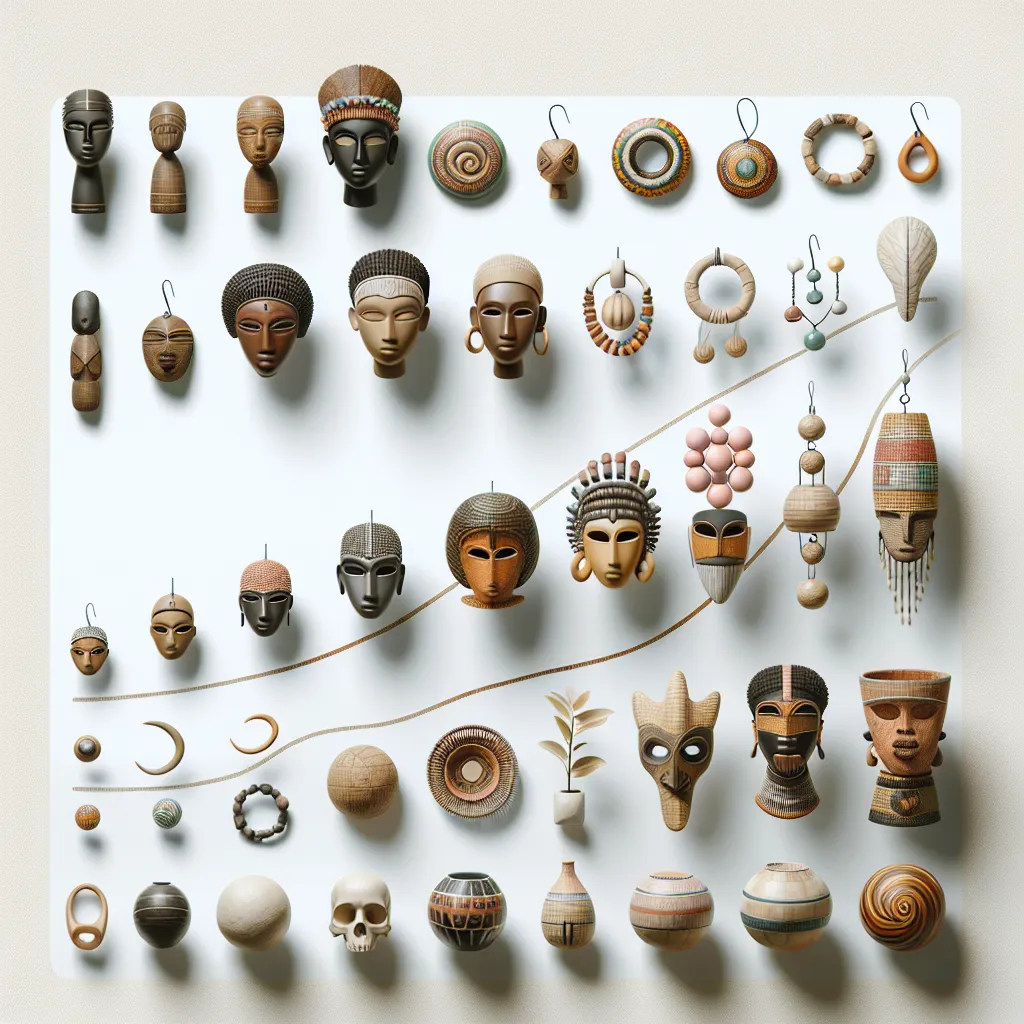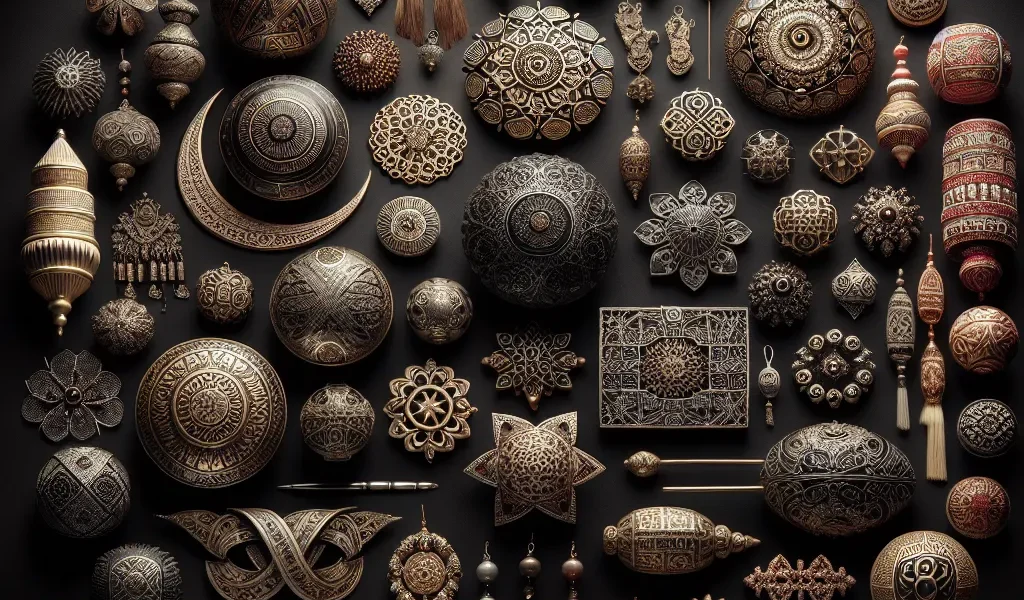Ornamental Design Evolution: Past, Present, and Future
Share
The world of design is a captivating journey that mirrors the evolution of human civilization itself. Ornaments, both in their physical form and conceptual essence, have played a significant role in beautifying and providing meaning to our surroundings. From ancient civilizations to contemporary trends, ornament design has evolved, reflecting cultural, religious, and aesthetic shifts over time. This exploration offers a comprehensive look at how ornament design trends have changed and what the future holds for this intricate art form.
 Source: Hartland Mill
Source: Hartland Mill
Historical Foundations
Ornament design has always been a reflection of the society and era in which it was created. In ancient Egypt, for instance, ornaments were laden with symbolic meaning, often representing deities, pharaohs, and aspects of the afterlife. Hieroglyphs and intricate carvings were not merely decorative but served as a medium for storytelling and communicating religious beliefs.
The Greeks and Romans took a different approach, favoring geometric patterns and naturalistic depictions of flora and fauna. These designs were more about celebrating the natural world and human achievements than conveying religious narratives. Over time, these Greco-Roman styles were adopted and adapted by various European cultures, each adding their unique flair.
The Medieval period saw a shift towards religious themes, with churches and cathedrals adorned with intricate carvings and stained glass windows depicting biblical scenes. The Gothic style introduced more elaborate and vertical designs, emphasizing height and grandeur.
The Renaissance marked a return to classical motifs but with a renewed focus on humanism, symmetry, and proportion. This was followed by the Baroque and Rococo periods, which were characterized by their opulence and dynamic designs, reflecting the grandeur of the time.
Key Trends in Ornament Design
Industrial Revolution and Arts & Crafts Movement
The 19th and 20th centuries brought about significant transformations in ornament design, largely influenced by industrialization. The mass production capabilities of the Industrial Revolution led to the proliferation of machine-made ornaments. However, this also sparked a counter-movement—Arts and Crafts—that sought to revive traditional craftsmanship. This movement rejected the industrial aesthetic in favor of handcrafted, unique designs.
Modernism and Minimalism
Modernism marked a radical departure from previous styles, embracing simplicity and functionality. The mantra "form follows function" often meant eschewing ornamentation altogether. This minimalist approach was a reaction against the perceived excesses of the Baroque and Rococo periods.
Postmodernism and Eclecticism
Postmodernism brought a blend of tradition and innovation, often incorporating eclectic and pastiche elements. Designers found value in reviving historical styles but with a contemporary twist. This period also saw a rise in global influences, as designers began to draw inspiration from a variety of cultures and traditions.
Case Study: The Rebirth of Ornaments in Contemporary Design
Today, ornament design is a fascinating fusion of traditional and contemporary elements. Let's examine a specific instance where this blend is particularly evident.
 Source: Hartland Mill
Source: Hartland Mill
The Role of Digital Technology
The advent of digital technology has revolutionized ornament design. Modern designers use software to create intricate patterns that were previously impossible to achieve by hand. For example, generative design algorithms allow for the creation of complex, organic forms that can be 3D printed into physical objects. This has opened up new possibilities for customization, enabling designers to produce unique pieces tailored to individual preferences.
Global Influences
Another significant trend is the blending of global influences. Designers are increasingly drawing inspiration from a wide range of cultural sources, from indigenous art to contemporary street art. This eclectic approach reflects the globalized nature of today's world, where cultural exchange is more accessible than ever before.
Sustainability and Ethical Design
Sustainability has become a crucial consideration in contemporary ornament design. Designers are exploring eco-friendly materials and ethical production methods, aiming to create beautiful objects without compromising the environment. This approach is not only socially responsible but also resonates with a growing consumer demand for sustainable products.
The Future of Ornament Design: Trends to Watch
As we look to the future, several trends are likely to shape the world of ornament design.
Integration of Smart Technology
Smart technology is set to revolutionize ornament design, making it more interactive and functional. Imagine a piece of jewelry that changes color based on your mood or an ornament that doubles as a health monitor. The integration of technology into design will open up new avenues for creativity and functionality.
Augmented Reality (AR) and Virtual Reality (VR)
AR and VR technologies are already making waves in various fields, and ornament design is no exception. These technologies can provide a virtual space for designers to experiment with new ideas and for consumers to visualize how ornaments would look in their personal spaces before making a purchase.
Customization and Personalization
The demand for personalized products is on the rise. Advances in digital manufacturing and design technologies are making it easier for consumers to customize ornaments to suit their tastes and preferences. This trend towards personalization is likely to continue, offering consumers unique, one-of-a-kind pieces.
Sustainability and Circular Design
Sustainability will remain a key focus, with more designers adopting circular design principles. This involves creating products that can be easily disassembled and recycled, minimizing waste and promoting a more sustainable lifecycle for ornaments.
Final Thoughts: Embracing the Dynamic World of Ornament Design
The evolution of ornament design is a testament to human creativity and the enduring desire to beautify our surroundings. Each era has left its unique mark, creating a rich tapestry of styles and motifs that continue to inspire contemporary designers. Whether through the revival of traditional techniques or the adoption of cutting-edge technology, ornament design remains a dynamic and ever-changing field.
For those interested in exploring the latest trends and purchasing unique ornaments, visit Wear Fortune. Here, you'll find a curated collection that reflects the diverse and evolving nature of ornament design.
As we move forward, the ability to adapt and innovate will continue to define the world of ornament design, reflecting the complexities and diversity of human culture. Whether you're a designer, a consumer, or simply an admirer of beautiful objects, there's no doubt that the journey of ornament design is far from over. The future holds endless possibilities, and we can't wait to see where this captivating art form will go next.




